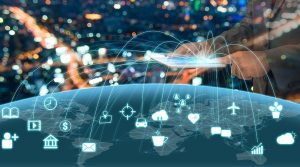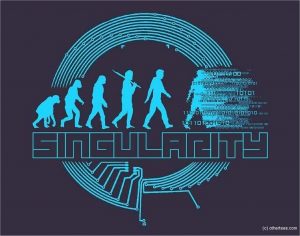
Making life simpler
In a world governed universally by technology, the linear progression of our technology seems to be taking an exponential turn for the better. With the immergence of Artificial Intelligence (AI) and the Internet of Things (IOT), seemingly tedious tasks will become obsolete and automated by robotics. The technologies pertaining to this industry will soon be integrated into our cities, our cars, our homes and even our places of business. Artificial Intellectual integration will be emulated in cities throughout the world. Smart Cities will allow for servicemen to more simply complete tasks throughout their day, for energy consumption to be optimized and for mitigation of traffic accidents. Indicators in trash bins, automated vehicles connected with other vehicles and traffic control mechanisms, efficiency in motion sensor lighting, are all functionalities of an integrated technology and they all have a common denominator– namely efficiency. The goal of these infrastructure innovations is to boost efficiency and mitigate costs; therefore, allowing for positive socio-economic growth.

Source: Bitcoin Magazine | Author: Giulio Prisco
Sooner than later, IOT will be integrated into nearly everything that functions for a specific purpose; furthermore, optimizing these tasks oriented around efficiency and productivity such as automation and energy consumption will be done by machine learning (ML) and will acclimate accordingly as our societies and planet adapt. The question of IOT will soon evolve from what it does, to what doesn’t it do—and to many, this is a scary thought.
Robot Singularity? Or Evolution of Society?
US policy makers have already passed a bill that will allow for tens of billions of computer processing chips to be placed into every day appliances and inanimate objects, linking them to the internet. This act, namely The DIGIT Act, denotes the impact this innovation in society will have over our everyday lives. To many, this may sound frightening and challenging. Influencers such as Elon Musk and the now deceased Stephen Hawking have claimed that AI and IoT integration will lead to the downfall of humanity as we know it.

Source: Mondo 2000 | Author: Brummbär
However, the people who lead this revolution are confident in their abilities and determined to create AI and IoT that are mathematically provably beneficial to the human race. Developing machine learning that learns solely for the purpose of serving the interests of its owner, rather than of objectifying its own goals. This programmable robotic purpose is integral to the creation of IOT simply because we are creating these machines for the purpose of alleviating the work load and stresses of life that can be automated; we are not creating these machines so as to give way to a new form of life on Earth. Working towards this type of machine learning is imperative, so that we do not end up in a society such as the one portrayed in the cinematic film Terminator. In this movie, Skynet, a global intelligence system, allows for interconnectivity of cyborgs that aspire to overthrow mankind. From this, we know that through the development of our version of IOT and AI, this would be a capability developers and world leaders would not want to have imbedded in our robotics infrastructure.
Creating IOT and artificial intelligence in the years to come has the intention of catapulting humanity into the biggest revolution of our existence. Infrastructure, travel, communication, efficiency and mostly all other aspects of life as we know it will all be gentrified at an exponential rate, with boundaries to be pushed passed the limits that constrain us today. With the creation of the Internet of Things, and its implementation in the shortcoming, global advancements in all known industries are assured by the technological advancements applicable to nearly everything. With this technology, we not only will expect to see positive disruption of current industries, but also the creation of new industries oriented around IOT and technological innovation with the intending pursuit of revolutionizing life as we know it.




There are no comments yet